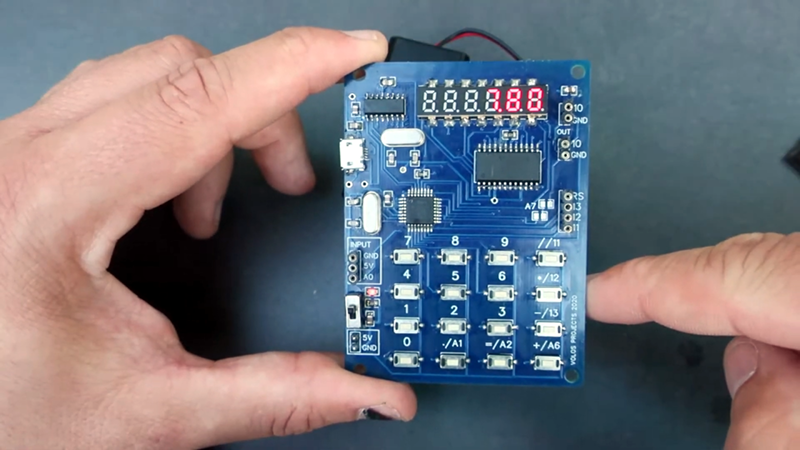All by itself, a calculator based on an Arduino isn’t necessarily very novel. However, [Danko Bertović] of Volos Projects has a nice board that, of course, looks like a calculator. There are 16 keys and an LED display. But it seems to us the real value would be using this as a base for other projects.
As an inexpensive development board, it’s handy to have a simple processor with a keyboard and a display. There’s some extra I/O pins and the first example in the video below shows using the setup as a simple organ, for example. We’d love to see an option to replace the LED with an LCD and maybe even some different CPU options, as well.
The board is essentially an Arduino with a standard USB to serial chip and a MAX7219 display driver. Of course, you could breadboard up all of these things, but it wouldn’t be as neat looking. One unusual thing about the keyboard is that it is not multiplexed. Each button has a label that indicates what Arduino pin it connects with. So key 6 connects to pin 6 and pin A2 connects to the key marked =/A2.
With the availability of inexpensive PC boards, we’re seeing many nice designs out there that would be easy to repurpose for other things. For example, we thought this board would easily run the Kim Uno, with some modifications to the I/O routines. Might even be able to work out a clone of an even older computer to fit on the board.















It just got me scribbling into page 372 of Volume 3 of the “Things to look into Sometime” list, the idea that you could put an AVR/ATtiny on an interposer that will solder down to one of the “ubiquitous” calculator chip epoxy blobs’ footprints. Such that you chisel it off the board and give it a brain transplant, then have a custom calculator or calcuputer with 8 digits of glorious 7 segment output.
Some of the old school calculators in the VFD and LED era use higher than 5V for their LSI. e.g. TI5x series. Some use PMOS (HP-35) and some use NMOS (hp9820A and 9830A).
I have replaced a SOIC18W uC in a USB meter with a SSOP20 on a PCB with Castellated Edges:
https://hackaday.io/page/6524-my-smallest-pcb-so-far
Nice, I’ll spot you a whole extra like when I get back to my .io logged in machine, spend it wisely! :-)
I was thinking more of the 3V-ish LCD ones, Elsimate clones, 2xAA or 1xCR2032.
In that case, you want uC with built-in LCD drivers. e.g. PSoC4 (1.9 to 5.5 V), some of the PICs etc